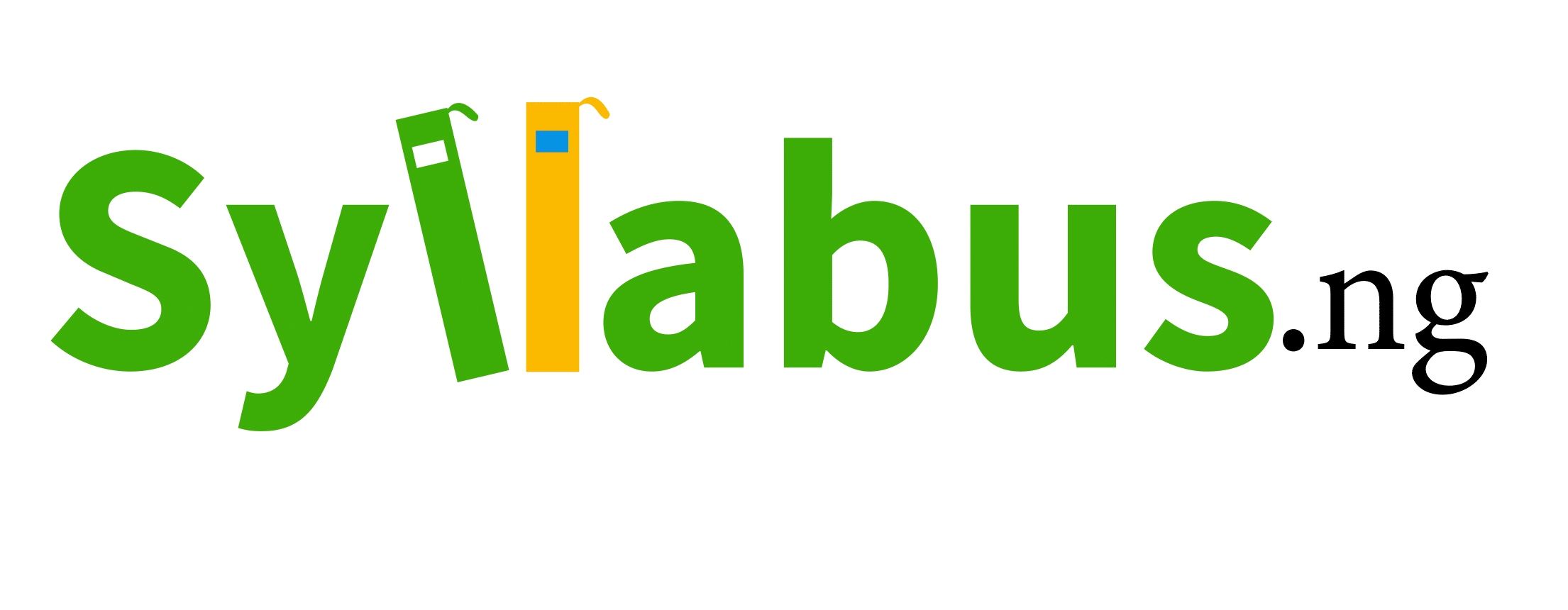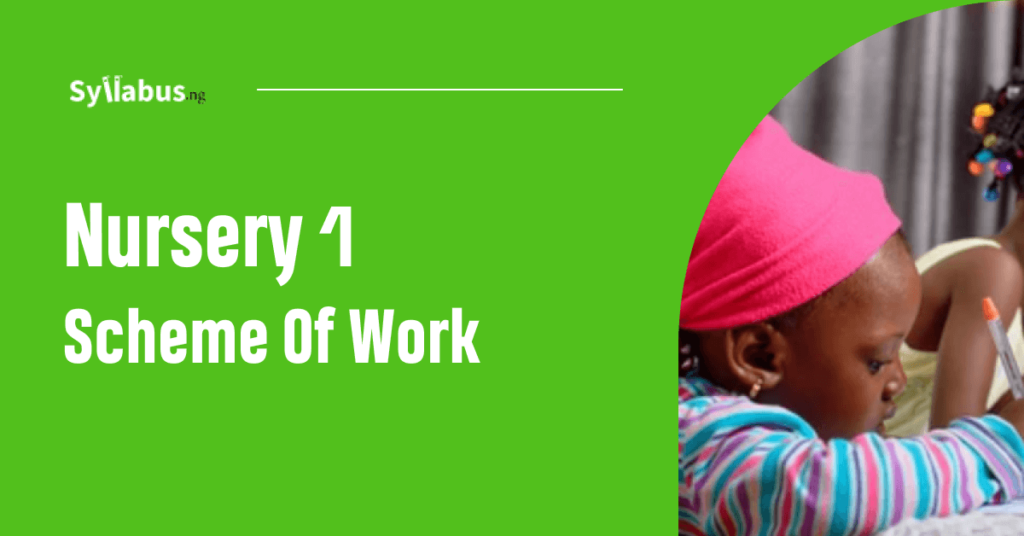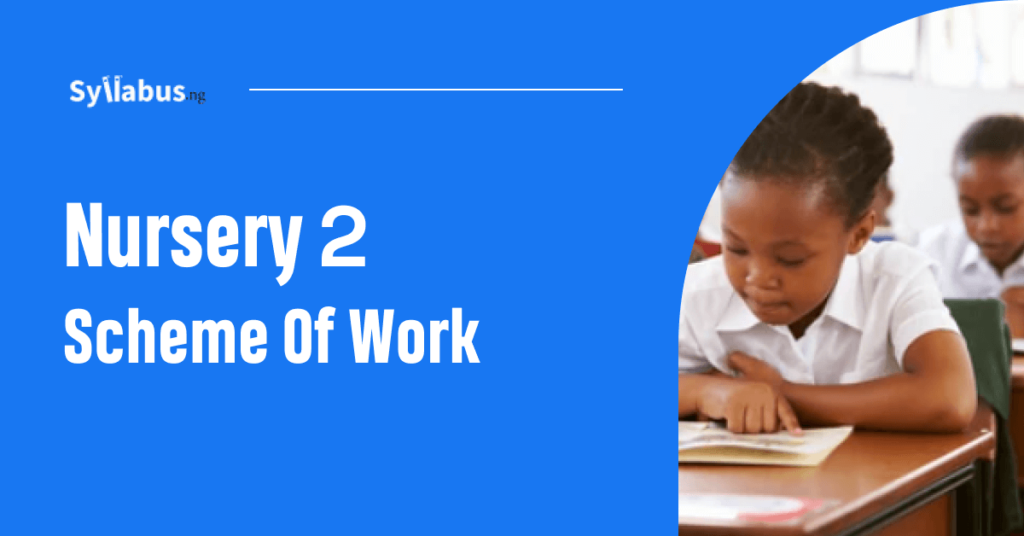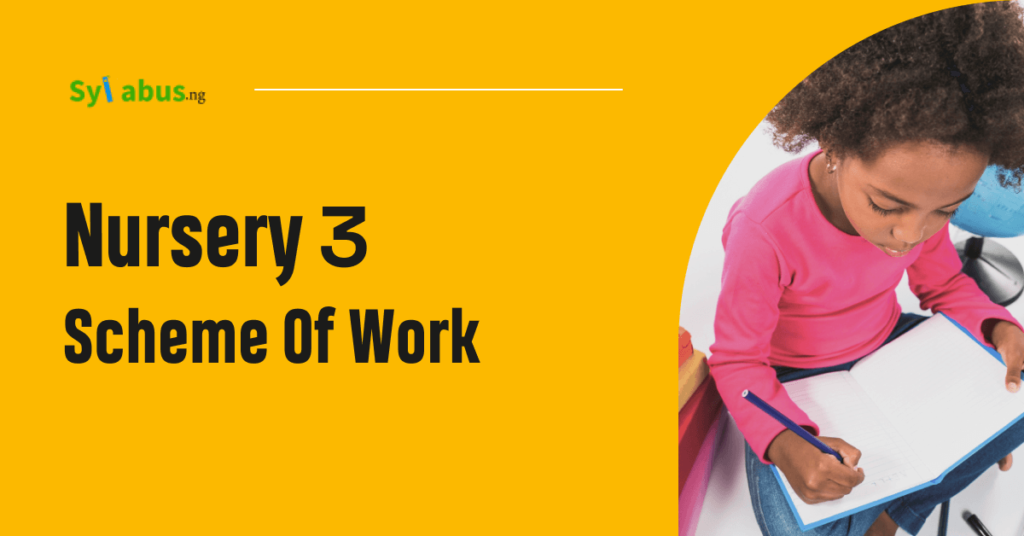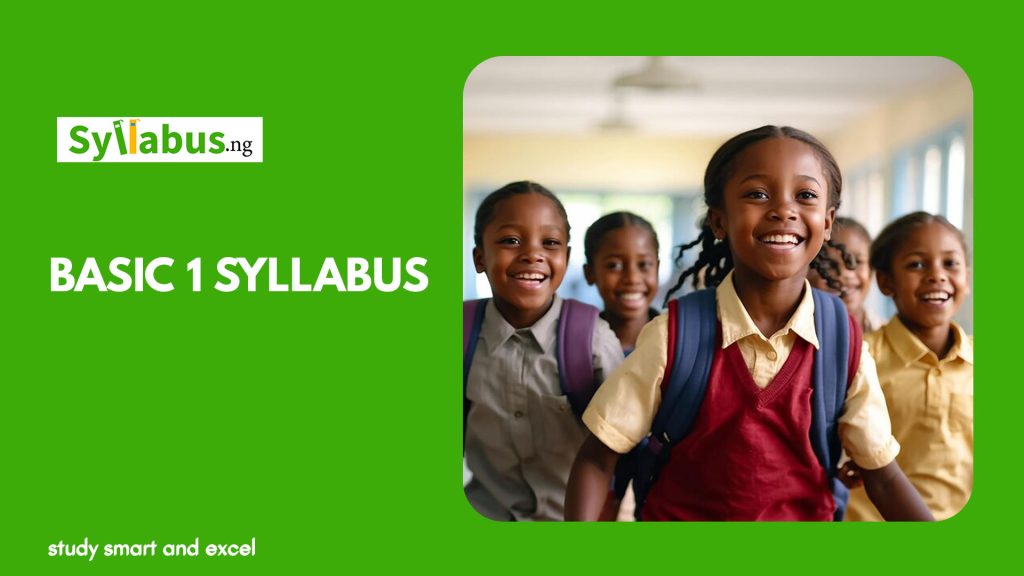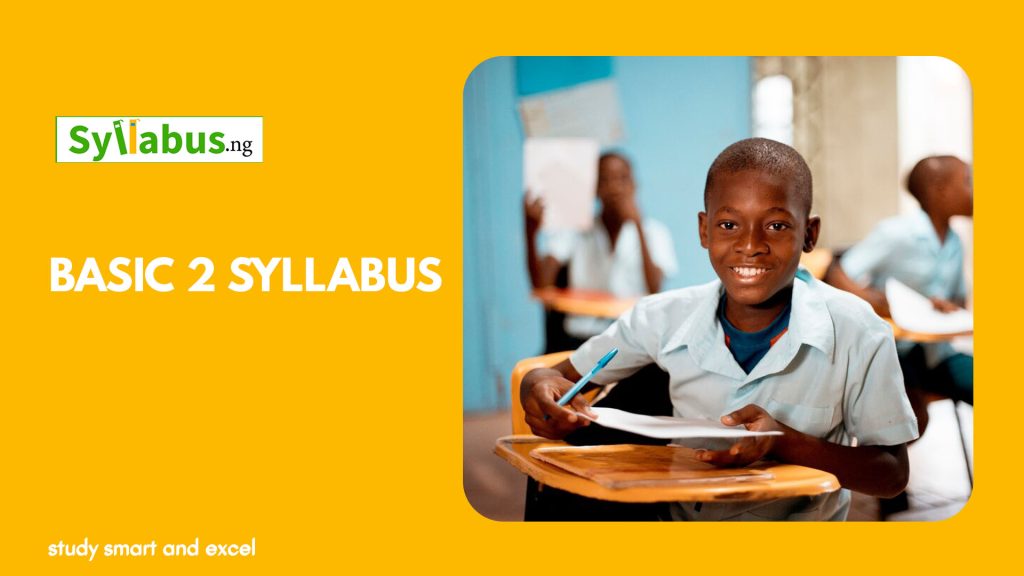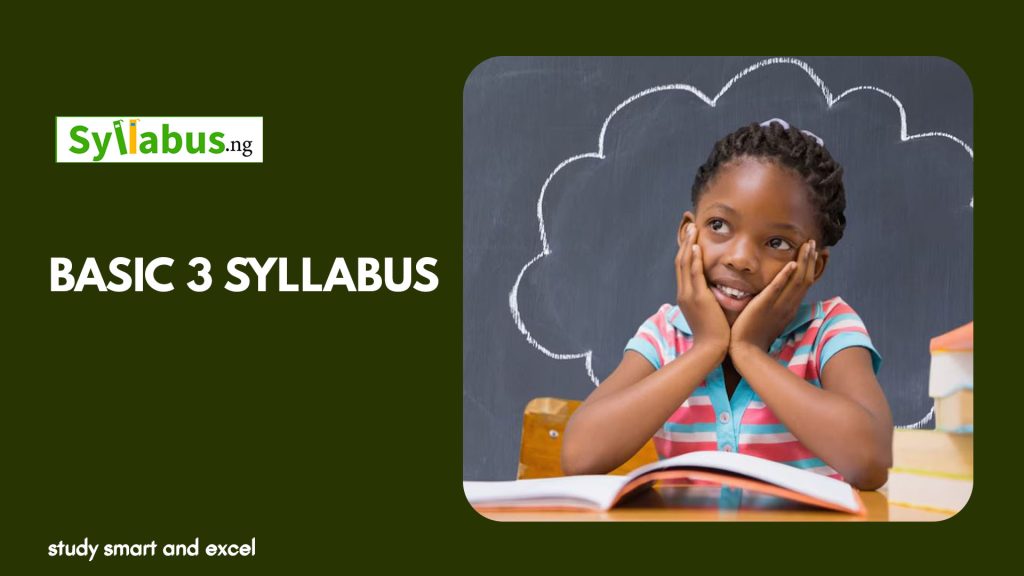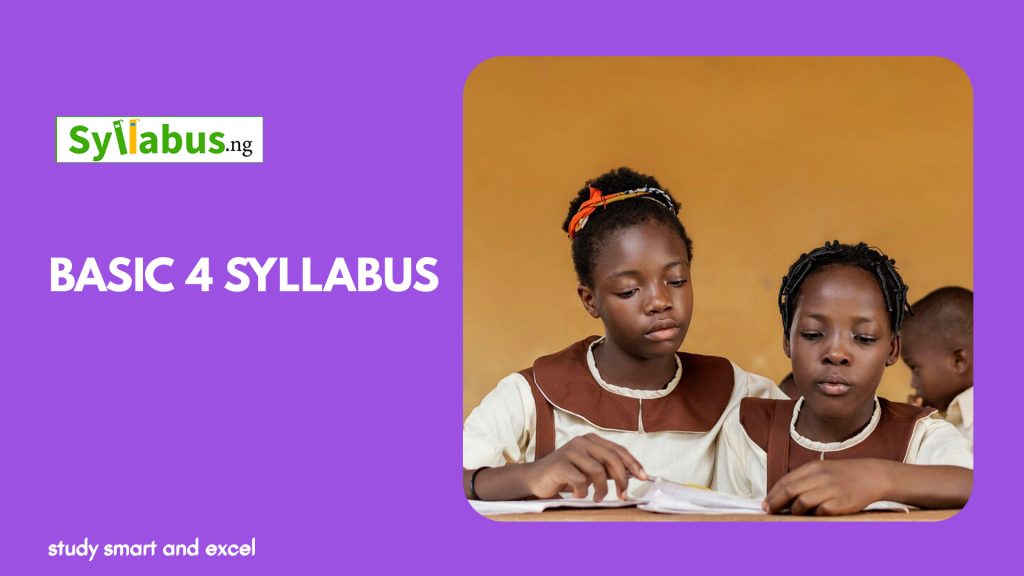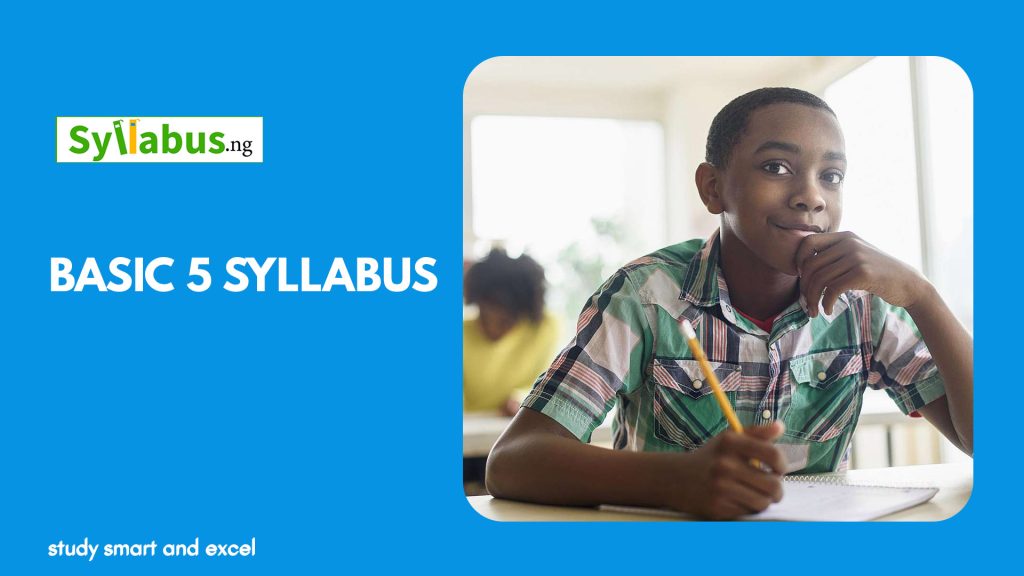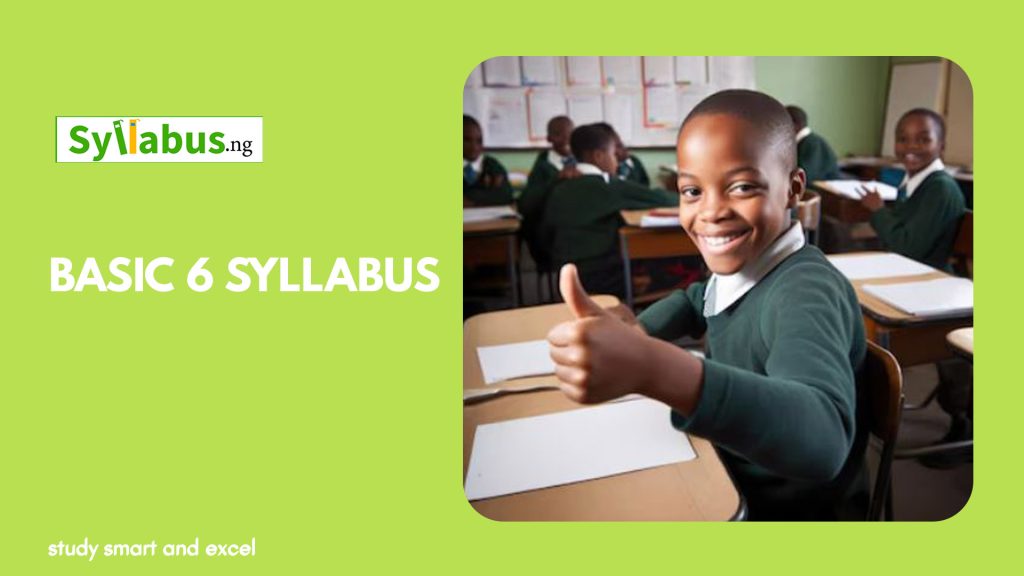Nursery 3 Literacy (Letter Work) Scheme of Work
Download the Nursery 3 Literacy (Letter Work) Scheme of work as created by the National Association of Proprietors of Private Schools(NAPPS) as a guide for educators and parents to teach kids.

Home » Nursery 3 Scheme of Work » Nursery 3 Literacy (Letter Work) Scheme of Work
Home » Nursery 3 Scheme of Work » Nursery 3 Literacy (Letter Work) Scheme of WorkAbout Literacy (Letter Work) Scheme of Work for Nursery 3
The NAPPS Nursery 3 Literacy (Letter Work) scheme of work is one that is designed to build a strong foundation in reading and writing in children. It will help children recognize and understand letters and their sounds.
This subject includes topics covering the alphabet, phonics, and basic vocabulary. Its major aim is to develop early literacy skills in an engaging and interactive manner.
With this scheme of work, teachers will be able to create a structured lesson plan to make her class more engaging. The NAPPS Literacy scheme of work provides an easy teaching method for introducing letters and sounds in a way that is easy for young learners to grasp.
At the end of Nursery 3, children should be able to recognize all the letters of the alphabet, understand their sounds, and start forming simple words.
Download Nursery 3 Literacy (Letter Work) Scheme of Work
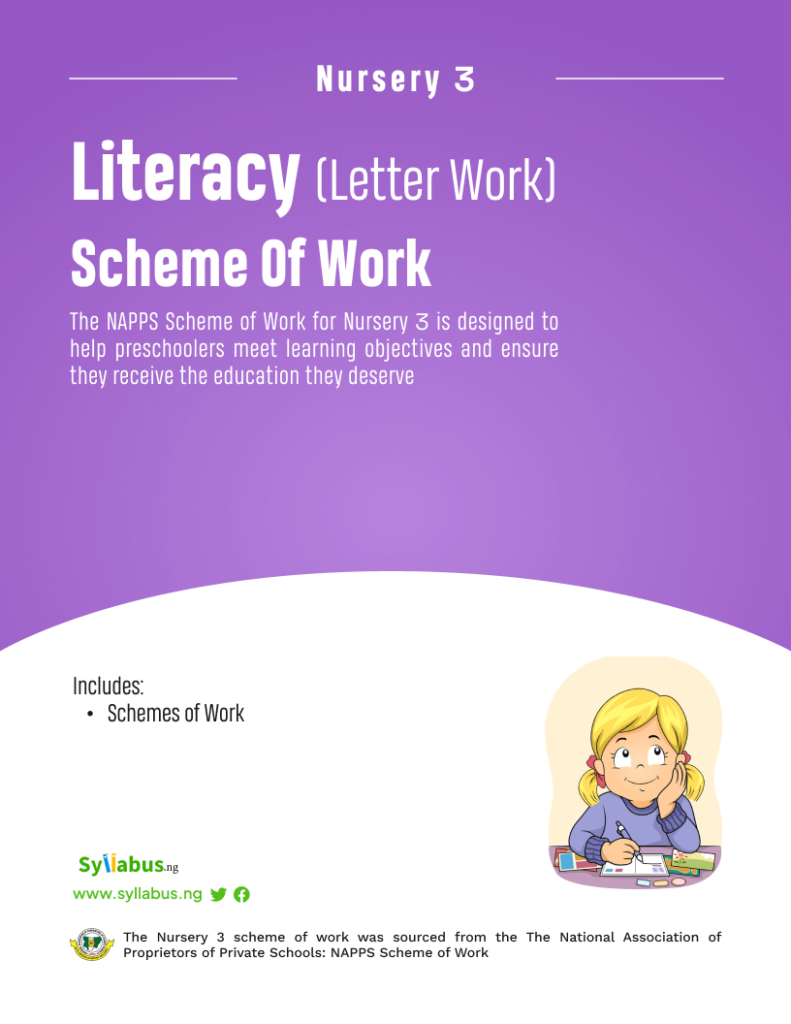
Know what’s expected of you as an educator
Download the NAPPS Unified Scheme of Work for Nursery 3 Literacy (Letter Work)
Nursery 3 First Term Scheme of Work for Literacy (Letter Work)
| Source | National Association of Proprietors of Private Schools | |||
| Class | NURSERY 3 | |||
| Subject | LITERACY (LETTER WORK) | |||
| Term | FIRST TERM | |||
| Week | Topic | Teachers Activities | Pupil Activities | Learning Resources |
| 1 | WRITING | i. The teacher guides pupils to Copy letters Aa – Ff. | i. Pupils practise correct writing skills and they write letter Aa – Ff. | Tracing, Writing exercise book |
| 2 | STRUCTURE SPEECH | i. With the aid of pictorial charts and posters, teacher guides pupils through matching same letters – uppercase and lowercase: Aa – Zz. ii. The teacher explains and demonstrates simple greetings and commands and guides pupils to make correct responses. | i. Pupils associate letters with pictures and letters. ii. Pupils demonstrate and respond to greetings at school, greetings at home and general greetings like “how are you?” | Flash cards Songs Plastic alphabets |
| 3 | WRITING SPEECH | i. The teacher guides pupils through matching letter Aa – Jj with pictures and words. ii. The teacher tells a story to the pupils and engages them in a discussion.. | i. Pupils associate letters with pictures and words. ii. Pupils write letters Aa –Jj and they pronounce the letters correctly. iii. Pupils participate in the class discussion actively and answers questions asked by the teacher. | Moveable alphabets, Tracing and writing books Story books. |
| 4 | WRITING SPEECH | i. With the aid of pictorial charts and posters,the teacher guides pupils through matching letters Kk – Oo with pictures and words. ii. The teacher guides pupils through correct pronunciation of the letters and the words. | i. Pupils associate letters with pictures and words. ii. Pupils practise correct writing skills by writing letters Kk – Oo. iii. Pupils match & read letters Kk – Oo. | Tracing and writing books, tapes/CDs. |
| 5 | WRITING SPEECH | i. With the aid of pictorial charts and posters,the teacher guides pupils through matching letters Pp – Tt with pictures and words. ii. The teacher guides pupils through correct pronunciation of the letters and the words. | i. Pupils associate letters with pictures and words. ii. Pupils practise correct writing skills by writing letters Pp – Tt. iii. Pupils match & read letters Pp – Tt. | Tape recorder, television, tracing books, charts, pictures, etc. |
| 6 | SPEECH WRITING | i. With the aid of pictorial charts and posters,the teacher guides pupils through matching letters Uu – Zz with pictures and words. ii. The teacher guides pupils through correct pronunciation of the letters and the words. | i. Pupils associate letters with pictures and words. ii. Pupils practise correct writing skills by writing letters Uu – Zz. iii. Pupils match & read letters Uu – Zz. | Pencil grip, crayons, tracing books, etc. |
| 7 | WRITING SPEECH | i. The teacher tells an interesting story to the pupils and gets them in a class discussion telling. ii. The teacher observes their speech and corrects the pupils when necessary to ensure good pronunciation of words. iii. The teacher guides the pupils to trace letters Aa-Jj and to write the letters on their own with the teacher’s guide. | i. Pupils listen attentively to the teachers as she tells them a story. ii. Pupils participate actively in the class discussion after listening to the story. They ask questions and answer the teacher’s questions. iii. Pupils trace and write letters Aa – Jj with and without the teacher’s guidance. | Story book, tracing book, pencils, etc. |
| 8 | SPEECH WRITING | i. With the aid of pictorial charts and posters,the teacher guides pupils through matching objects and their names. ii. The teacher guides the pupils to pronounce the words correctly. iii. The teacher guides pupils through copying letters Ll – Pp and correct pronunciation of the letters. | i. Pupils identify objects and match them to their names. ii. Pupils pronounce words correctly. iii. Pupils practise correct writing skills by writing letters Ll – Pp. | Pencil, writing books, charts and pictures. |
| 9 | WRITING SPEECH | i. With the aid of an MP3 player or an MP4 player, the teacher leads the pupils to sing songs and recite rhymes and to pronounce words correctly. ii. The teacher leads pupils to trace letters Kk – Tt | i. Pupils sing songs and recite rhymes along with the teacher and they attempt to pronounce the words correctly. ii. Pupils trace and write letters Kk – Tt with and without the teacher’s guidance. | MP3 player MP4 player Television Tracing book Writing book |
| 10 | SPEECH WRITING | i. The teacher leads the pupils to match objects and their names and to pronounce words accurately. ii. The teacher guides pupils to trace and copy letters Qq – Zz. | i. Pupils match objects with their names with and without the guidance of the teacher. ii. Pupils pronounce the words correctly. iii. Pupils copy trace and copy letters Qq – Zz and pronounce correctly. ing simple letters. | Charts Pictures Real objects Writing books etc |
| 11 | REVISION | |||
| 12 | EXAMINATION | |||
Nursery 3 Second Term Scheme of Work for Literacy (Letter Work)
| Term | Second Term | |||
| Week | Topic | Teachers Activities | Pupil Activities | Learning Resources |
| 1 | STRUCTURE SPEECH | i. With the aid of charts, posters, an mp3 or mp4 player, the teacher leads pupils through copying simple words which begin with: sound \a\ as in ant, apple; sound \b\ as in bag, bell, ball, etc. ii. The teacher guides pupils to form simple words won their own with the sounds /a/ and /b/. iii. The teacher guides pupils to pronounce words correctly. | i. Pupils listen to the mp3 or mp4 player. They copy simple words and are guided by the teacher to pronounce the words correctly. ii. Teacher gives more examples of words with the sounds and pupils copy and pronounce the words. iii. Pupils form simple words own their own with the sounds /a/ and /b/ with the teacher’s guide. | Writing books Television Tape recorder MP3 player MP4 player |
| 2 | SPEECH WRITING | i. With the aid of charts, posters, an mp3 or mp4 player, the teacher leads pupils through singing songs and reciting rhymes. ii. The teacher guides pupils to pronounce words correctly. iii. The teacher guides pupils to copy words with letter Bb and guides pupils to write words with letter Bb on their own. iv. Teacher guides pupils to identify and objects that begin with letter Bb beautifully. | i. Pupils sing songs and recite rhymes along with the teacher and the mp3 or mp4 player. ii. Pupils pay attention to pronouncing words correctly with the teacher’s guide or correction. iii. Pupils copy simple words with letter Bb and write words of their own with the teacher’s guide. iv. Pupils identify and colour objects that begin with letter Bb. | Picture books Television, MP3 player MP4 player Charts Crayons Colour pencil |
| 3 | SPEECH WRITING | i. With the aid of charts, posters, an mp3 or mp4 player, the teacher leads pupils through copying simple words which begin with: sound \c\ as in cat, cup, cut, come, cage, etc. ii. Teacher leads pupils to write words that begin with the sound on their with guidance. | i. With the aid of charts, posters, an mp3 or mp4 player, the teacher leads pupils through copying simple words which begin with: sound \c\ as in cat, cup, cut, come, cage, etc. ii. Teacher leads pupils to write words that begin with the sound on their with guidance. | Picture books Television, MP3 player MP4 player Charts |
| 4 | SPEECH WRITING | i. With the aid of an mp3 or mp4 player, the teacher leads the pupils to sound \d\ as in dog, dad, day, date, den, dew, dust, etc. iii. The teacher guides pupils to copy and pronounce words with beginning sound /d/ correctly. iv. Teacher guides pupils through matching objects and words with beginning sound /d/. v. The teacher guides pupils to listen attentively to poems and stories. vi. The teacher initiates a class discussion on the poem and stories and encourages the pupils to participate actively in the class discussion. | i. Pupils copy words with beginning sound /d/ and pronounce them correctly as guided by the teacher. ii. Pupils write words with beginning sound /d/ on their own with and without the teacher’s guidance. iii. Pupils match objects with beginning sound /d/ and words. iv. Pupils recite poems and rhymes that involve sound /d/. | Picture books Television, MP3 player MP4 player Charts |
| 5 | SPEECH WRITING | i. With the aid of an mp3 or mp4 player, the teacher leads the pupils to sound \e\ as in egg, elephant, end, epic, edit, etc. ii. Teacher guides pupils to copy and pronounce words with beginning sound /e/ correctly. iii. Teacher guides pupils to match objects and words with beginning sounds /e/. iv. Teacher guides pupils to write words with beginning sound /e/ on their own with and without the teacher’s guidance | i. Pupils copy words with beginning sound /e/ and pronounce them correctly as guided by the teacher. ii. Pupils write words with beginning sound /e/ on their own with and without the teacher’s guidance. iii. Pupils match objects with their beginning sound /e/ and words. | Picture books Television, MP3 player MP4 player Charts |
| 6 | SPEECH WRITING | i. With the aid of an mp3 or mp4 player, the teacher leads the pupils to sound \f\ as in for, fan, fine, film, far, fake, frog, etc. ii. Teacher guides pupils to copy and pronounce words with beginning sound /f/ correctly. iii. Teacher guides pupils to match objects and words with beginning sound /f/. iv. Teacher plays nursery rhymes and guides pupils to listen attentively. v. The teacher initiates class discussions on the nursery rhymes and encourages the pupils to participate actively in the class discussions. | i. Pupils copy words with beginning sound /f/ and pronounce them correctly as guided by the teacher. ii. Pupils write words with beginning sound /f/ on their own with and without the teacher’s guidance. iii. Pupils match objects that have beginning sound /f/ and words. iv. Pupils recite the nursery rhymes and pronounce words correctly. | Picture books Television, MP3 player MP4 player Charts |
| 7 | SPEECH WRITING | i. Using charts, posters, and mp3 or mp4 player, the teacher leads the pupils to sound \g\ as in go, get, game, good, gun, guy, game, gate, etc. iv. The teacher guides pupils to correctly copy and pronounce words with beginning sound /g/. v. The teacher guides pupils to match objects and words with beginning sound /g/. vi. The teacher leads pupils to identify and colour pictures or objects with beginning sound /g/. | i. Pupils copy words with beginning sound /g/ and pronounce them correctly as guided by the teacher. ii. Pupils write words with beginning sound /g/ on their own with and without the teacher’s guidance iii. Pupils match objects that have beginning sound /g/ and words and colour the objects beautifully. | Picture books Television, MP3 player MP4 player Charts |
| 8 | SPEECH WRITING | i. Using charts, posters, an mp3 or mp4 player, teacher guides pupils to sound /h/ as in hat, het, head, how, etc. ii. Teacher guides pupils to correctly write words with beginning sound /h/ on their own with and without the teacher’s guidance. iii. Teacher leads pupils to match sound /h/ with pictures and words and to pronounce and write the words correctly. iv. Teacher leads the pupils to write words with beginning sound /h/ on their own with and without the teacher’s guidance. v. Teacher gets the pupils to listen to poems and stories and guides the pupils to recite the poems and answer questions on the stories. | i. Pupils pronounce words with /h/ sound and copy the words correctly in their notebooks. ii. Pupils write words with /h/ sound on their own with and without the teacher’s guidance. iii. Pupils associate sound /h/ with words and pictures with and without the teacher’s guidance. iv. Pupils listen to poems and stories and they recite the poems with correct pronunciation of words. | Picture books Television, MP3 player MP4 player Charts Rhyme book |
| 9 | SPEECH WRITING | i. Using charts, posters, an mp3 or mp4 player, teacher guides pupils to sound /i/ as in in, it, is, if, ink, lit, dim, pig, fit, etc. ii. Teacher guides pupils to correctly write words with beginning sound /i/ on their own with and without the teacher’s guidance. iii. Teacher leads pupils to match sound /i/ with pictures and words and to pronounce and write the words correctly. iv. Teacher leads the pupils to write words with beginning sound /i/ on their own with and without the teacher’s guidance. v. Teacher gets the pupils to identify and colour objects that have sound beginning /i/. | i. Pupils pronounce words with /i/ sound and copy the words correctly in their notebooks. ii. Pupils write words with /i/ sound on their own with and without the teacher’s guidance. iii. Pupils associate sound /i/ with words and pictures with and without the teacher’s guidance. iv. Pupils identify and colour beautifully objects that have sound beginning /i/. | Crayon Picture books Television, MP3 player MP4 player Charts |
| 10 | SPEECH WRITING | i. Using charts, posters, an mp3 or mp4 player, teacher guides pupils to sound /j/ as joy, jet. Jim, jig, jam, John, jug, etc. ii. Teacher guides pupils to correctly write words with beginning sound /j/ on their own with and without the teacher’s guidance. iii. Teacher leads pupils to match sound /j/ with pictures and words and to pronounce and write the words correctly. iv. Teacher leads the pupils to write words with beginning sound /j/ on their own with and without the teacher’s guidance. | i. Pupils pronounce words with /j/ sound and copy the words correctly in their notebooks. ii. Pupils write words with /j/ sound on their own with and without the teacher’s guidance. iv. Pupils associate sound /j/ with words and pictures with and without the teacher’s guidance. | Picture books Television, MP3 player MP4 player Charts |
| 11 | REVISION | |||
| 12 | EXAMINATION | |||
Nursery 3 Third Term Scheme of Work for Literacy (Letter Work)
| Term | Third Term | |||
| Week | Topic | Teachers Activities | Pupil Activities | Learning Resources |
| 1 | STRUCTURE | i. With the aid of charts and posters, teacher guides pupils to read simple words. ii. The teacher leads pupils to pronounce, spell and write simple words correctly. iii. The teacher guides pupils through formation of words using the format below: V – C words: An, it, if, or, up, in, etc. C – V words: Go, to, no, so, be, etc. | i. Pupils correctly copy and read simple words as guided by the teacher. ii. Pupils form simple words on their own with and without the teacher’s guidance to include two-letter words and they attempt to read or pronounce any two-letter words they come across. | Textbook Workbook Charts Posters Flash cards |
| 2 | SPEECH STRUCTURE WRITING | i. With the aid of charts, flash cards and posters, teacher guides pupils to read simple words. ii. Teacher leads pupils to pronounce, spell and write simple two-letter and three-letter words correctly. iii. Teacher guides pupils through formation of words using the format below: V – C words: at, in, ox, as, of, etc. C – V words no, so, hi, etc. iv. Teacher guides pupils to pronounce read random words. | i. Pupils correctly trace, copy and read simple words as guided by the teacher. ii. Pupils form simple words on their own with and without the teacher’s guidance to include two-letter words and they attempt to read or pronounce any two-letter words they come across. | Writing book Textbook Workbook Charts Posters |
| 3 | SPEECH WRITING | i. Using flash card and charts, teacher guides pupils to read two-letter and three-letter words. ii. Teacher leads pupils to pronounce, spell and write simple words correctly. iii. Teacher guides pupils through formation of words using the format below: C – V words: to, no, ha, etc. V – C words: us, up, is, am, an, or, etc. C – V – C words: rat, pat, leg, men, top, pig, nip, fan, etc. V – C – V words: ago, ate, see, use, ape, etc. V – C – C words: ant, arm, egg, ink, etc. iv. Teacher guides pupils to pronounce read random words. | i. Pupils correctly trace, copy and read simple words as guided by the teacher. ii. Pupils form simple two-letter and three-letter words on their own with and without the teacher’s guidance and they attempt to read or pronounce any two-letter and three-letter words they come across. | Moveable alphabets erasers, pencils, charts, Writing books, etc. |
| 4 | SPEECH WRITING | i. With the aid of charts and flash cards, teacher guides pupils to read simple two-letter, three-letter and four-letter words. ii. Teacher leads pupils to pronounce, spell and write simple words correctly. iii. Teacher guides pupils through formation of words using the format below: C – V – C words: run, tin, boy, sat, dad, sin, mom, rod, etc. C – V – V words: zoo, boo, too, toe, sea, bee, etc. V – C – C words: ant, art, end, ill, ass, ash, you, etc. V – C – V words: use, ago, ate, etc. iv. The teacher guides pupils to pronounce read random words. | i. Pupils correctly trace, copy and read simple words as guided by the teacher. ii. Pupils form simple two-letter, three-letter, and four-letter words on their own with and without the teacher’s guidance and they attempt to read or pronounce any two-letter, three-letter or four-letter words they come across. | Moveable alphabets erasers, pencils, charts, Writing books, etc. |
| 5 | SPEECH WRITING | i. With aid of mp3 and mp4 players, teacher get pupils to recite nursery rhymes and listen to interesting stories. ii. The teacher initiates a class discussion based on the nursery rhymes and stories and guides pupils to pronounce words correctly. iii. The teacher culls simple words from the nursery rhymes and stories and gets the pupils to pronounce and copy the words in their notebooks. | i. Pupils listen to nursery rhymes and recite with the teacher’s guidance. ii. Pupils listen to stories, ask questions and answer the teacher’s questions. iii. Pupils pronounce words culled from the nursery rhymes and copy the words in their notebooks. | MP3 player MP4 player Writing book Rhyme book |
| 6 | SPEECH WRITING | i. The teacher uses charts, flash cards, mp3 and mp4 players to guide pupils to spell and read up to four-letter words. ii. The teacher leads pupils to pronounce, spell and write simple words correctly. iii. The teacher guides pupils through formation of words using the format below: C – C – C words: try, fry, etc. C – V – V words: too, sea, bee, fee, etc. C – C – V words: she, the, bra, two, spa, who, etc. Random four-letter words: they, book, read, talk, pray, when, date, girl, food, sing, etc. iv. The teacher guides pupils to pronounce read random words. | i. Pupils correctly copy and read simple words as guided by the teacher. ii. Pupils spell and write random words as guided by the teacher. iii. Pupils write simple two-letter, three-letter, and four-letter words on their own with and without the teacher’s guidance and they attempt to read or pronounce any two-letter, three-letter or four-letter words they come across. | MP3 player MP4 player Writing book |
| 7 | SPEECH WRITING | i. The teacher uses charts, flash cards, mp3 and mp4 players to guide pupils to spell and read up to four-letter words. ii. The teacher leads pupils to pronounce, spell and write simple words correctly. iii. The teacher guides pupils through formation of words using the format below: Random two-letter words: me, so, hi, by, we, of, so, it, no, to, go, up, in, is, as, etc. Random three-letter words: yes, day, boy, eye, hat, cap, cat, son, Random four-letter words: jump, head, nose, hand, shoe, take, race, game, fast, etc. iv. The teacher guides pupils to pronounce read random words. | i. Pupils correctly copy and read simple random two-letter, three-letter and four-letter words as guided by the teacher. ii. Pupils spell and write random words not more than four letters as guided by the teacher. iii. Pupils write simple two-letter, three-letter, and four-letter words on their own with and without the teacher’s guidance and they attempt to read or pronounce any two-letter, three-letter or four-letter words they come across. iv. Pupils attempt to spell and read random words not more than four letters. | MP3 player MP4 player Writing book |
| 8 | COLORING WRITING | i. With the use of flash cards, charts and apt textbooks, the teacher guides the pupils to copy and read simple words. ii. The teacher writes simple sentences on the board such as: “I am fast.” “You are a girl.” “She is a girl.” iii. Teacher leads the pupils to identify the words in each sentence in isolation. Teacher leads the pupils to read the words as a sentence. iv. The teacher guides pupils to copy the simple sentences into their notebooks. | i. Pupils correctly copy and read simple random two-letter, three-letter and four-letter words as guided by the teacher. ii. Pupils spell and write random words as guided by the teacher. iii. Pupils read simple sentences made of two-letter, three-letter, and four-letter words on their own with and without the teacher’s guidance and they attempt to read or pronounce any two-letter, three-letter or four-letter words they come across. iv. Pupils practise reading as frequently as possible and ask the teacher for guidance when necessary. | MP3 player MP4 player Writing book Reading book Flash cards |
| 9 | SPEECH WRITING | i. With the use of flash cards, charts and apt textbooks, the teacher guides the pupils to copy and read simple random words. ii. The teacher writes simple sentences on the board such as: “My dad has come.” “He is good to me.” “I can sing.” “This is my book.” “They are boys.” “I want to eat rice.” iii. Teacher leads the pupils to identify the words in each sentence in isolation. Teacher leads the pupils to read the words as a sentence. Teacher guides pupils to copy the simple sentences into their notebooks. | i. Pupils correctly copy and read simple random two-letter, three-letter and four-letter words as guided by the teacher. ii. Pupils spell and write random words as guided by the teacher. iii. Pupils read simple sentences made of two-letter, three-letter, and four-letter words on their own | MP3 player MP4 player Writing book Reading book Flash cards |
| 10 | SPEECH WRITING | i. With the use of flash cards, charts, mp4 player and apt textbook, the teacher guides the pupils to copy and read simple random words. ii. The teacher writes simple sentences on the board such as: “I am going.” “The boy is at home.” “She has a fine cloth.” “This is my book.” “My mom is a woman.” “He is in school.” iii. Teacher leads the pupils to identify the words in each sentence in isolation. Teacher leads the pupils to read the words as a sentence. iii. The teacher guides pupils to copy the simple sentences into their notebooks. | i. Pupils spell and write random words as guided by the teacher. ii. Pupils read simple sentences made of two-letter, three-letter, and four-letter words on their own with and without the teacher’s guidance and they attempt to read or pronounce any two-letter, three-letter or four-letter words they come across with and without the teacher’s guidance and they attempt to read or pronounce any two-letter, three-letter or four-letter words they come across. iii. Pupils practise reading as frequently as possible and ask the teacher for guidance when necessary. | MP3 player MP4 player Writing book Reading book Flash cards |
| 11 | REVISION | |||
| 12 | EXAMINATION | |||
Download Nursery 3 Literacy (Letter Work) Scheme of Work

Know what’s expected of you as an educator
Download the NAPPS Unified Scheme of Work for Nursery 3 Literacy (Letter Work)
